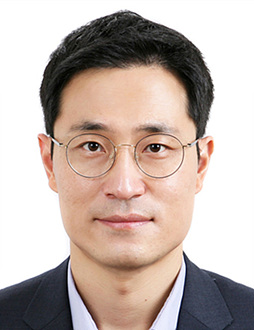[Contact] Professor Hyeong Joon Koo, Department of Chemical and Biomolecular Engineering at the College of Energy and Biotechnology, Seoul National University of Science and Technology (☎ 02-970-6611)
SeoulTech Professor Hyeong Joon Koo’s research team develops perovskite solar cells based on liquid metal electrodes
- Published in the Advanced Functional Materials journal in the field of materials science
- Liquid metal electrode properties promising for flexible solar cell technology
□ The research team, led by Professor Hyeong Joon Koo of the Department of Chemical and Biomolecular Engineering at the Seoul National University of Science and Technology (SeoulTech, President Dong Hwan Kim), has suggested a new potential application of liquid metal electrodes by utilizing eutectic gallium-indium (EGaIn) alloy as an electrode for perovskite solar cells (1st author: Dr. Ji Hye Kim).
□ The results of the study were published online on December 6 (Wed), in the journal Advanced Functional Materials (I.F.: 19.0, JCR Ranking%: 3.18%) with the title "Liquid Metal-Based Perovskite Solar Cells: In Situ Formed Gallium Oxide Inter Improves Stability and Efficiency."
□ Liquid metals, which are liquid at room temperature, can maintain their high electrical conductivity even when subjected to physical deformations such as bending and stretching. For this reason, there have been some attempts to utilize liquid metals as electrodes in flexible perovskite solar cells. However, the interfaces between liquid metals and solar cells have not been studied or discussed in depth.
□ Professor Hyeong Joon Koo’s research team utilized gallium-based liquid metal as the electrode of perovskite solar cells and systematically analyzed the interfacial properties of the liquid metal. The team revealed for the first time that the spontaneously formed gallium oxide layer on the surface of the liquid metal could be positioned at the interface between the solar cell layer and the liquid metal electrode.
□ First, the liquid metal oxide film at the interface acts as a barrier to inhibit metal diffusion from the electrode into the perovskite layer, minimizing the loss of solar cell efficiency due to metal penetration and improving device stability. Second, the liquid metal oxide film removes the Schottky barrier that hinders electron transport and lowers the interfacial resistance, facilitating the transport of photoelectrons generated in the perovskite layer.
□ The researchers fabricated a flexible perovskite solar cell based on a flexible transparent electrode and a liquid metal electrode, and showed that the solar cell maintained stable performance under repeated bending tests.
□ The researchers also showed that the used liquid metal electrodes can be easily recovered by simple acid treatment, a property that could be very useful in solar cell recycling.
□ The findings provide important information to consider when utilizing liquid metals as electrodes in solar cells and are expected to contribute to the development of flexible and sustainable solar cells.
□ This research was supported by the Ministry of Science and ICT, the Ministry of Education, and the National Research Foundation of Korea (NRF).
Attached: 2 relevant images. End.

▲ (Left) Schematic diagram of the perovskite solar cell structure with a liquid metal electrode. (Center) Diagram illustrating the two functions of the gallium oxide film. (Right) Image of the flexible solar cell device manufactured with a liquid metal electrode. [Image provided by Professor Hyeong Joon Koo's research team at the Seoul National University of Science and Technology]


▲ (From left) Dr. Ji Hye Kim, Professor Hyeong Joon Koo

